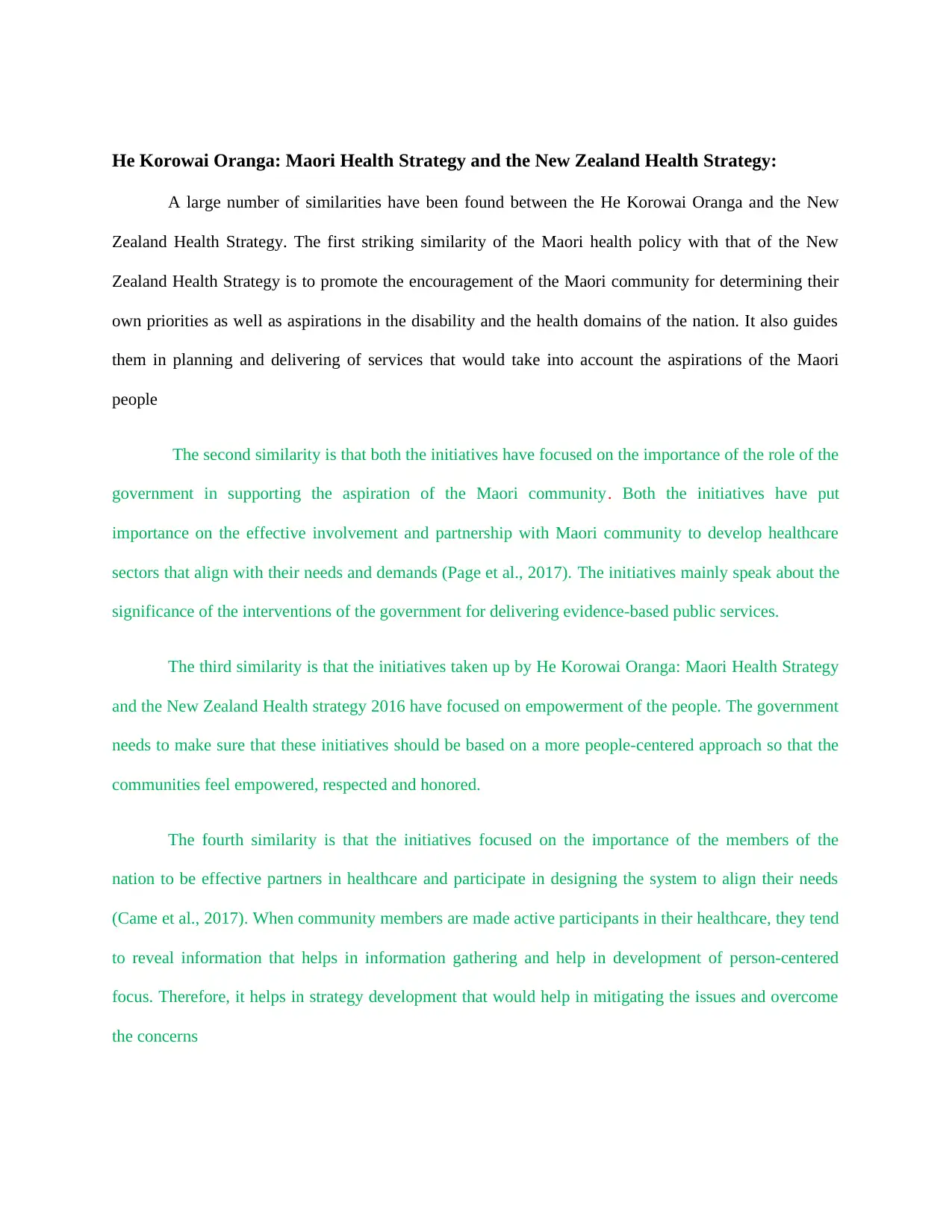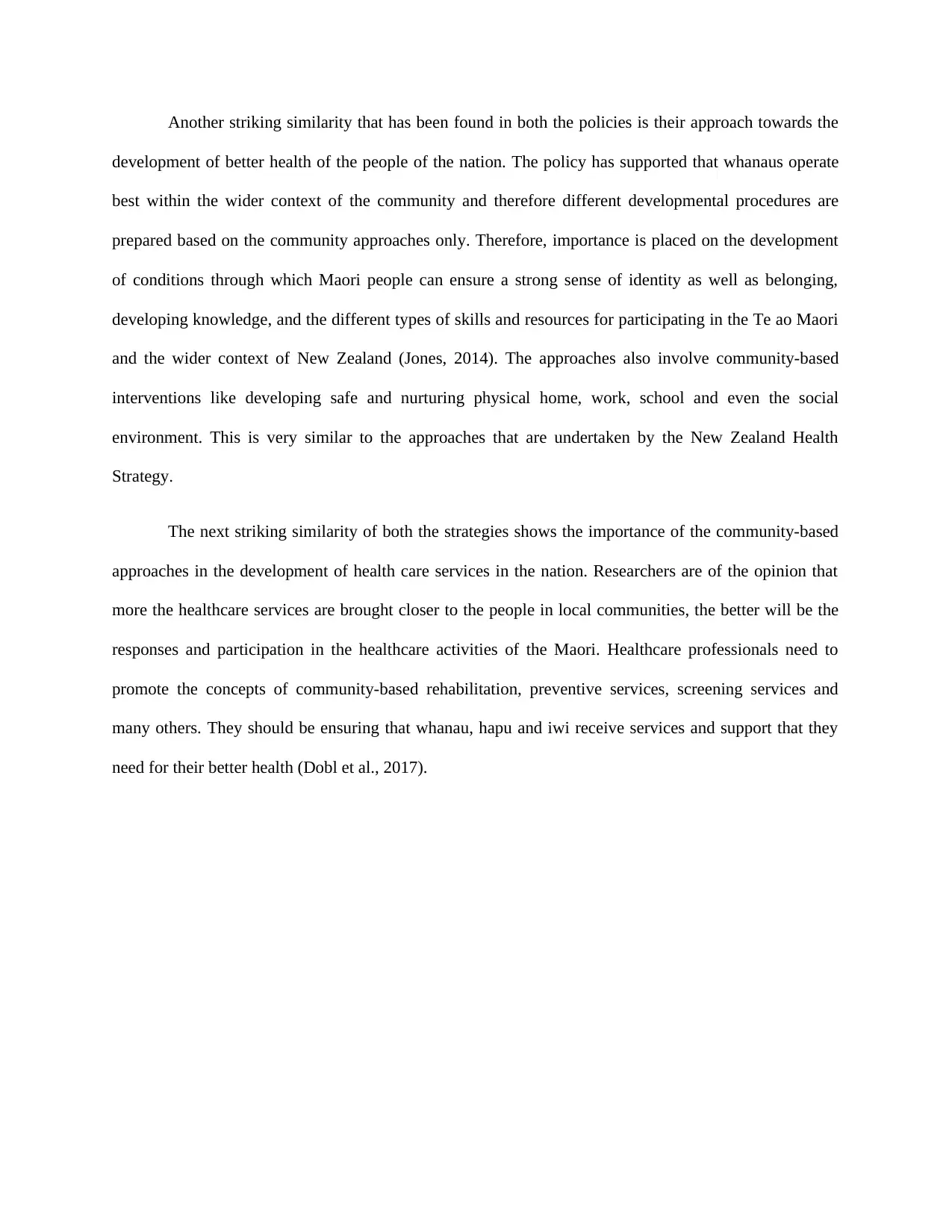Report: He Korowai Oranga and NZ Health Strategy Comparison
VerifiedAdded on 2023/06/03
|2
|594
|326
Report
AI Summary
This report analyzes the He Korowai Oranga: Maori Health Strategy, focusing on its aims, target group, and rationale. It compares this strategy to the New Zealand Health Strategy 2016, highlighting similarities such as the emphasis on Maori community involvement in determining priorities, the government's supportive role, empowerment of people, and community-based approaches to healthcare. The report explores how these strategies align, providing examples and discussing the importance of community participation in healthcare design. Furthermore, the report identifies and analyzes a specific health initiative implemented to support the achievement of the Maori Health Strategy, examining how this initiative supports improved health outcomes for the target group. The report includes an introduction, body, and conclusion, along with a table of contents, background, executive summary, 15 APA formatted references, and relevant citations, adhering to a word count of 1500 words.
1 out of 2








![[object Object]](/_next/static/media/star-bottom.7253800d.svg)